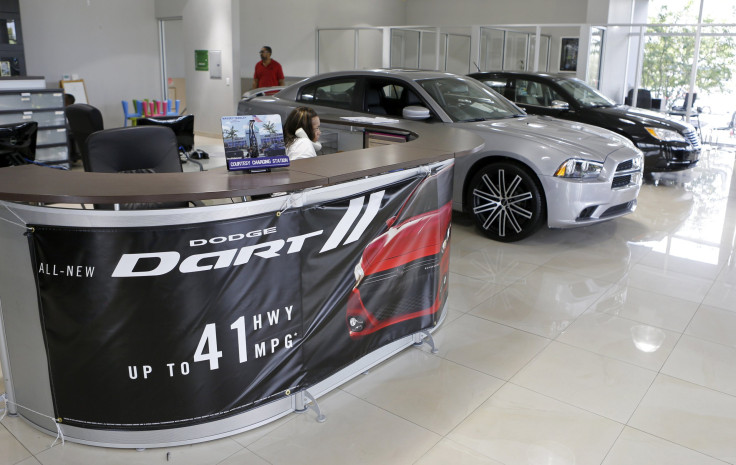Auto Industry Contribution To US GDP Is Way Up From 2011, When Fears Of Double-Dip Recession Made Consumers Wary

Buried in Wednesday’s second-quarter U.S. gross domestic product numbers released by the Department of Commerce is data on how much the auto industry’s contribution to the economy has grown in recent years. Amid a robust post-recession auto-sector recovery fueled largely by cheap credit, the contribution to the U.S. economy from new and used motor vehicles and auto parts has risen by nearly one percentage point compared to the second quarter of 2011.
Wednesday’s government data shows the American automotive marketplace contributed 0.42 of a percentage point of annualized growth to the nation’s 4 percent GDP growth in the second quarter, up from flat last year and negative growth in the same quarter of 2011.
Three years ago, the nation barely avoided a double-dip recession, after emerging in the second half of 2009 from the longest period of U.S. economic contraction in eight decades. Emerging from the Great Recession, the U.S. economy picked up in 2010 to nearly the level it is today. But then the economy hit a speed bump, slowing to less than 1 percent growth in the first quarter of 2011. The situation improved, consumer confidence rebounded and the auto industry began to speed up its recovery. This year, the number of new motor vehicle sales will return to pre-recession levels.
Helping to spur activity in the U.S. auto market have been record-low auto lending rates, which have pushed the total sum of loans to a record $902 billion, a 29 percent jump from just three years ago.
The rise in auto lending has caused some to wonder whether we’re experiencing a replay in the auto sector of the housing bubble that collapsed in 2007, sending the economy into a recession. The New York Times recently underscored the rise in subprime lending to low-income car buyers. As in the runup to the mortgage meltdown, banks and private equity firms are offering up cash to lend to high-risk borrowers (people with credit scores below 640) at high interest rates. Then these loans are bundled into bonds passed to insurance companies, mutual funds and public pension funds. Subprime auto loans have more than doubled since the end of the Great Recession.
Chris Stinebert, president and chief executive of the American Financial Services Association, which represents the consumer credit lenders, rejected the notion that a bubble was forming in the subprime auto lending market.
“An increase in subprime loans means that more working-class Americans have transportation when that could be the difference between having a job or not,” Stinebert wrote in a letter to the editor of the Times in response to the story, which reported that some banks are providing false data on loan applications to approve borrowers who clearly cannot pay back the loans they receive.
But whether or not poor people are being suckered into subprime auto loans they have no way of paying back, data from the Federal Reserve shows that total auto loan delinquencies (people who haven’t made a payment for 90 or more days) have declined by more than a third since the second quarter of 2011.
As long as lenders and investors see that more than 96 percent of auto loans payments are current, there will not be an incentive to curtail borrowing to keep the auto sector healthy. Automakers will announce their U.S. motor vehicle sales figures for July on Friday. The sector is expected have increased sales by at least 10 percent compared to the same month last year. If auto lending is in a bubble, it hasn’t burst yet.
© Copyright IBTimes 2024. All rights reserved.












